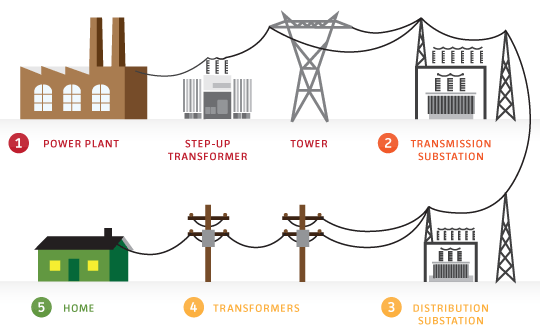The answer to why DC current is not used in homes goes back to the inherent characteristics of direct currents and their weaknesses compared to Alternating Currents (AC). In fact, AC currents can be easily transmitted over long distances without much loss. They are also safer in direct touch at an equal voltage. In this article, we try to explore this issue.
DC and AC Currents Characteristics
Electricity is defined as the current of electrons throughout a conductor like a wire. The electricity flow is established in two ways, including AC and DC. The principal difference between AC and DC currents lies within the direction of electrons movement.
DC refers to Direct Current. DC current is defined as a unidirectional current of electricity. In DC current, the electrons travel from a negative charge zone to a positive charge area without any change in direction. This state is despite alternating currents in which current can move in both directions. DC can pass through both conductive and semiconductor materials.
In DC, the current intensity changes along with time, but the current direction stays the same. According to the definition, DC is the current whose polarity never reverses.
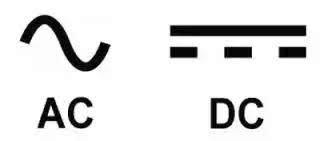
An alternating current is the flow of charge, which changes its direction periodically. Consequently, the voltage level turns along with the current. AC is a type of current that is used to transfer power to places where humans live or travel, like homes, industries, or other buildings.
An alternator generates AC designed to produce alternating current. Within a magnetic field, an induced current flows along a loop of spinning wire. The wire rotation comes from different means, such as any kind of turbines (wind, water, steam, etc.).
Because of the spinning of the wire and its entrance into various magnetic polarities periodically, the voltage and the current alternate inside the wire. Therefore, the current can be in different shapes such as sine, square, triangular, or other waveforms. The most common current shape is the sine shape.
The sinusoidal form of the AC voltage is expressed by the following equation.
V\left(t\right)=V_p{\mathrm{sin} \left(2\pi ft+\mathrm{\Phi }\right)\ }
V(t) is the voltage, which is a function of time and Vp is the amplitude. The variable f is the frequency of the wave. Also, t is the independent variable. Finally, Φ is the phase of the sine wave.
For example, the battery uses DC current to transmit current to the electrical circuit in which it is present. In a battery system, electrical energy is generated from the chemical energy stored in the battery. By connecting the battery to the electrical circuit, a constant charge current is provided from the negative to the positive terminal of the battery.
The following figure shows the difference between AC and DC waveforms.
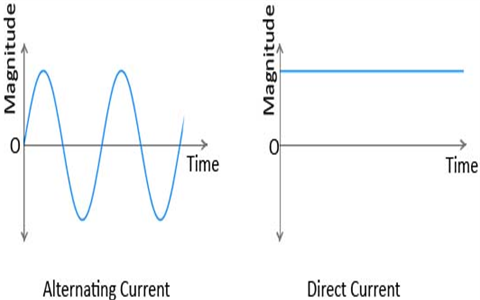
DC and AC currents can be converted to each other. An inverter is used to convert DC current to AC, and a rectifier is used to convert AC current to DC.
Explaining the Reason Why DC Current is Not Used in Homes
Generally, the primary source of direct current is generated by batteries, electrochemical, or photovoltaic cells. However, AC is the most preferred one in the world. Based on this scenario, AC is converted to DC.
The alternating current usually is applied to electricity distribution systems for different reasons. The most significant reason is the readiness to be converted from one voltage to another. Doing this with DC is significantly more complicated and expensive. So in order to transform DC current, AC is generated by electronic circuits, and then, it is transformed with a transformer and rectifier to DC.
The process of converting AC into DC occurs in successive steps. At first, the power supply includes a transformer, which is later converted to DC using a rectifier. It restricts the current from reversing, and a filter is used to remove current pulsations in the rectifier output.
Vast quantities of AC power can be converted to almost any desired voltage, with a very small loss of energy utilizing an electric transformer, including coils with generated magnetic fields linked.
All conductors that carry electricity at room temperature have electrical resistance and therefore heat up during electricity current.
The heat generated is proportional to the electrical resistance and the quadratic power of the electric current.
P=RI^2
To decrease energy loss, it is essential to retain both resistance and electrical current low. A lower current is significantly more important than the resistance due to the exponential effect on losses.
The power is calculated by multiplying volts by amperes.
P=VI
So for specific power, the voltage must be high when the current is kept low. In the following equation, the numerator of the fraction is constant, but the denominator becomes larger, so the product of the fraction decreases.
V=\frac{P}{I}
Huge transformers are used in power transmission lines to control high voltage values to minimize losses.
However, high voltages are not safe, especially for a man’s life, so leading a high voltage current into a house is not an acceptable action.
AC power is then quickly and efficiently converted to an almost safe voltage at local transformers in the place of residence. Doing this with DC is not nearly as easy or cheap.
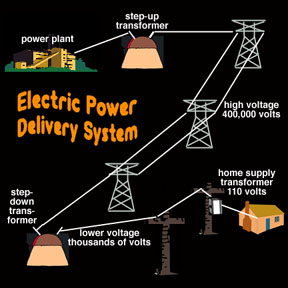
So, here we can summarize all reasons why DC current is not used in homes.
- Functionally, the DC voltage cannot move very far unless it starts to lose energy.
- AC current is reliable to transfer over longer distances within the cities and generated more power.
- DC is more harmful than AC for the same voltage since it is more troublesome to get released if touched as the voltage does not exceed zero. Muscles contract with steady force in the case of DC current.
- Electrolytic corrosion is more probable with DC than AC.
- DC arcs do not quench as quickly, for the reason of not going the voltage through zero.
- AC induction motors are uncomplicated to create and keep. DC motors need a commutator and brushes or a complex electronic switching system.
- With the help of a transformer, AC current can be easily converted from high voltages to low voltages and vice versa. Thus, a remarkable advantage of AC voltage over DC is stepping up and down the voltage based on the requirement.
- AC production and communication can be performed using fewer substations than DC.
- If the human body gets shocked with AC, the alternating current enters and exits from the human body at regular time periods. However, DC constantly causes trouble for the human body.
- The place surrounded by the alternating current is more than DC.
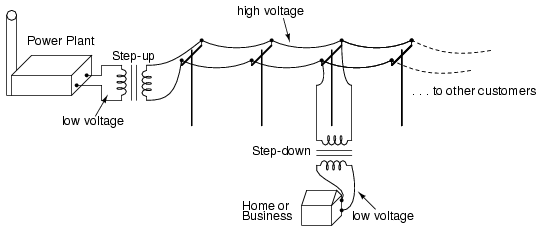
Comparison between AC and DC Applications
Alternating current is basically used in the industry of the generation and transportation of electricity. AC provides power for almost every household around the world. DC is mainly not applied for these purposes due to some reasons. For example, heat production due to more power loss compared to AC, more significant dangers of causing a fire, more costs, and problems from converting high voltage and low current to low voltage and high current with the help of transformers.
AC is a more popular current in powering electric motors, a machine that converts electrical energy to mechanical energy. Direct current is common in devices containing batteries charged by plugging an AC to DC adapter into a power outlet or using a USB cable to charge. Examples include mobile phones, flashlights, modern TVs, and hybrid cars.
In China, a project has been run in which DC transmission lines carry power to homes with fewer energy losses than AC. It displays that household usage of DC power is becoming more popular. Also, Siemens company has established a high voltage direct current line (HVDC) with a distance of 65 miles. Such projects could make the use of renewable energy unprecedentedly.
Still, while higher DC voltages usually cause more hazardous power transmissions and the monitoring of DC grids can be challenging, large AC voltages can be decreased to more reliable levels when they are transmitted from a power plant.
Conclusion
With all of the above descriptions, experts are testing and presenting the easiest way to transfer power. Power transmission with AC current has proven itself repeatedly. In addition, DC voltage is reaching a point that is no longer considered an inefficient method. However, AC voltage is still the most reliable way to supply power.
Buy Equipment or Ask for a Service
By using Linquip RFQ Service, you can expect to receive quotations from various suppliers across multiple industries and regions.
Click Here to Request a Quotation From Suppliers and Service Providers
Read More On Linquip
- What Is Conduction Convection and Radiation? (With Example)
- Transformer Efficiency: Essential Things You Should Know
- Types of Electric Circuits: All Classification with Application
- What is the Equivalent Circuit of Transformer?
- What are the Advantages of AC over DC?
- What are the Disadvantages of Direct Current?
- Difference Between Resistance and Impedance- Resistance vs. Impedance
- Polarity Test: All You Should Know About
- Difference between Capacitor and Inductor- Capacitor vs. Inductor
- What are the Advantages of Alternating Current?
- What is the Difference between Direct Current and Alternating Current?
- What is the benefits of AC in Long-distance Transmission?
- What are the Disadvantages of Direct Current?
- What is AC Circuit and Its Characterization?
- What is Closed Circuit? Definition & Example
- What is Open Circuit? Diagram & Example
- Types of Resistor: Classification, Application, and Finally Clarification

